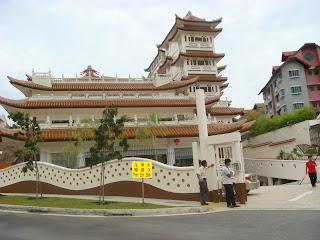On June 3, I was at Commonwealth Secondary School for the "Just One Earth Environmental Seminar 2009".
The first half of the seminar consisted of presentation by various speakers on importance of maintaining a green environment and sustainability of our resources. the second half of the seminar consisted of visits to various places related to the sustainable energy and waste management. I chose to visit the Poh Ern Shih Buddhist Temple for the excursion.
Mr Derrick Ho from MEWR (Ministry of the Environment and Water Resources) spoke on Sustainable Development Blueprint for Singapore and its Implications for Schools. It can be viewed in detail by clicking this link. Here is a more direct link to a list of actions that individuals can take in support of sustainable development.
You can see the pictures I took below.
At the Poh Ern Shih Buddhist Temple,you can meet volunteer Mr Lee Boon Siong. He is very committed to greening the temple. Many of his technologies are applicable to residential buildings too. You may want to read about the temple at the Poh Ern Shih Buddhist Temple website before visiting it yourself.
Cheers
To listen to some songs on the environment by Peter Garrett of Midnight Oil, click on the link below:
http://asal-sakti.blogspot.com/search/label/Peter%20Garrett
Cheers


























